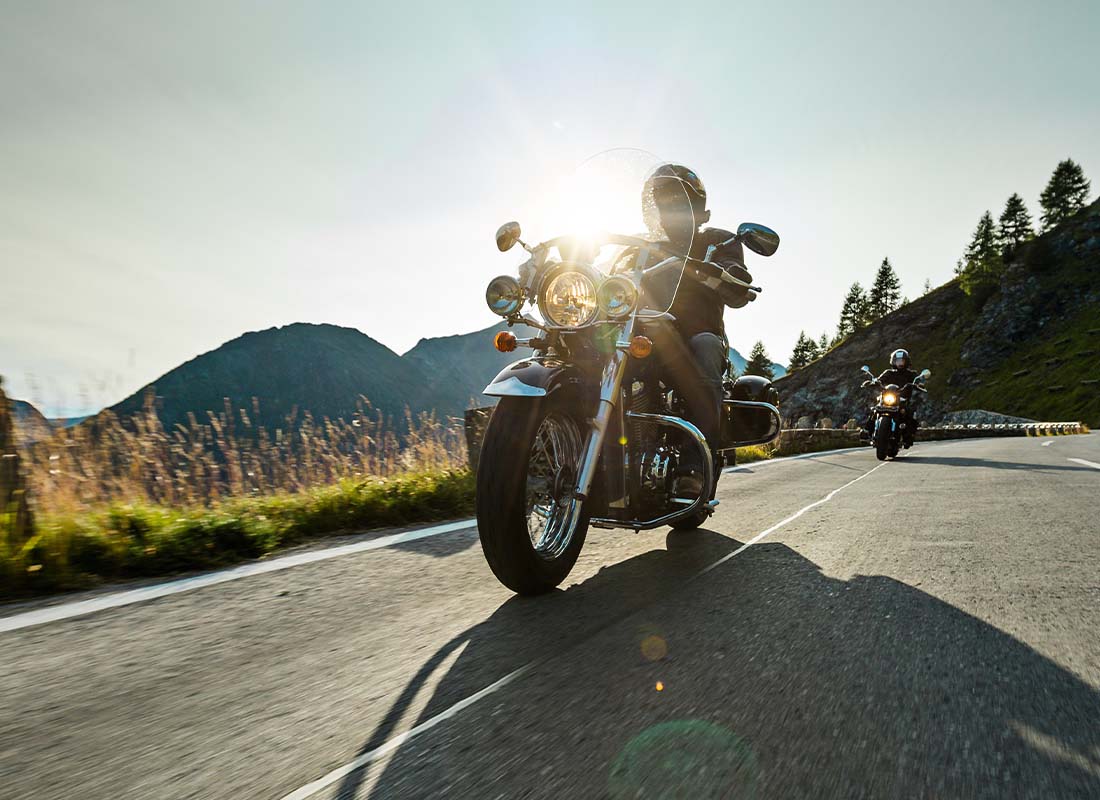
No matter where your journey takes you—hit the road with the peace of mind of motorcycle insurance.
Motorcycle insurance helps bring you peace of mind.
Like auto insurance, motorcycle insurance policies are made up of several components, some of which are legally required while others are optional, but a smart buy. You put a lot into your ride, make sure you safeguard your investment. Your motorcycle insurance policy may offer coverage for liability, damages, motorcycle accidents, and theft.
Legally required insurance coverage for motorcycles.
The absolute minimum coverage you’ll need when it comes to motorcycle insurance is liability insurance, which may cover the costs you have to pay to other people after an accident that’s your fault–including their medical bills and repairing or replacing their vehicle. Your local laws will set a minimum amount of coverage for liability insurance, but you may want the peace of mind of getting a higher coverage limit.
Does your motorcycle policy cover other riders?
If you only have the minimum amount of coverage, other riders may not be covered under your policy. However, you may be able to select coverage options to extend coverage to other riders.
Is your motorcycle covered from theft?
Your motorcycle insurance policy may include coverage for theft, whether it’s at home or elsewhere. It may also extend coverage for the theft of personal belongings.
What is uninsured/underinsured motorist coverage?
If an uninsured or underinsured motorist causes an auto accident when you are on your bike, uninsured/underinsured motorist coverage may compensate you for bodily injuries and lost wages.
What do collision and comprehensive coverage offer?
Motorcycle collision coverage may payout to repair or replace your bike after a crash, even if it’s deemed your fault. Meanwhile, comprehensive coverage adds in coverage for your bike being stolen, vandalized, or damaged by fire.
Optional coverages are designed to protect your ride.
Other optional extras worth considering include specific coverage for custom motorcycle parts such as GPS or trailers that you’ve added to your bike and aren’t necessarily included in your standard policy. You can also get coverage that pays your costs if you’re involved in a collision with an uninsured driver or rider. Finally, don’t forget roadside assistance, which will get you to a repair facility if your bike has a mechanical breakdown or you suffer a flat tire.
Are you ready to protect your ride with motorcycle insurance? Contact us, we’ll lead the way to help you find coverage.
Let’s Get Started
Motorcycle Insurance Quote Request
"*" indicates required fields
Don’t like forms? Contact us at 704-732-4646 or email us.
